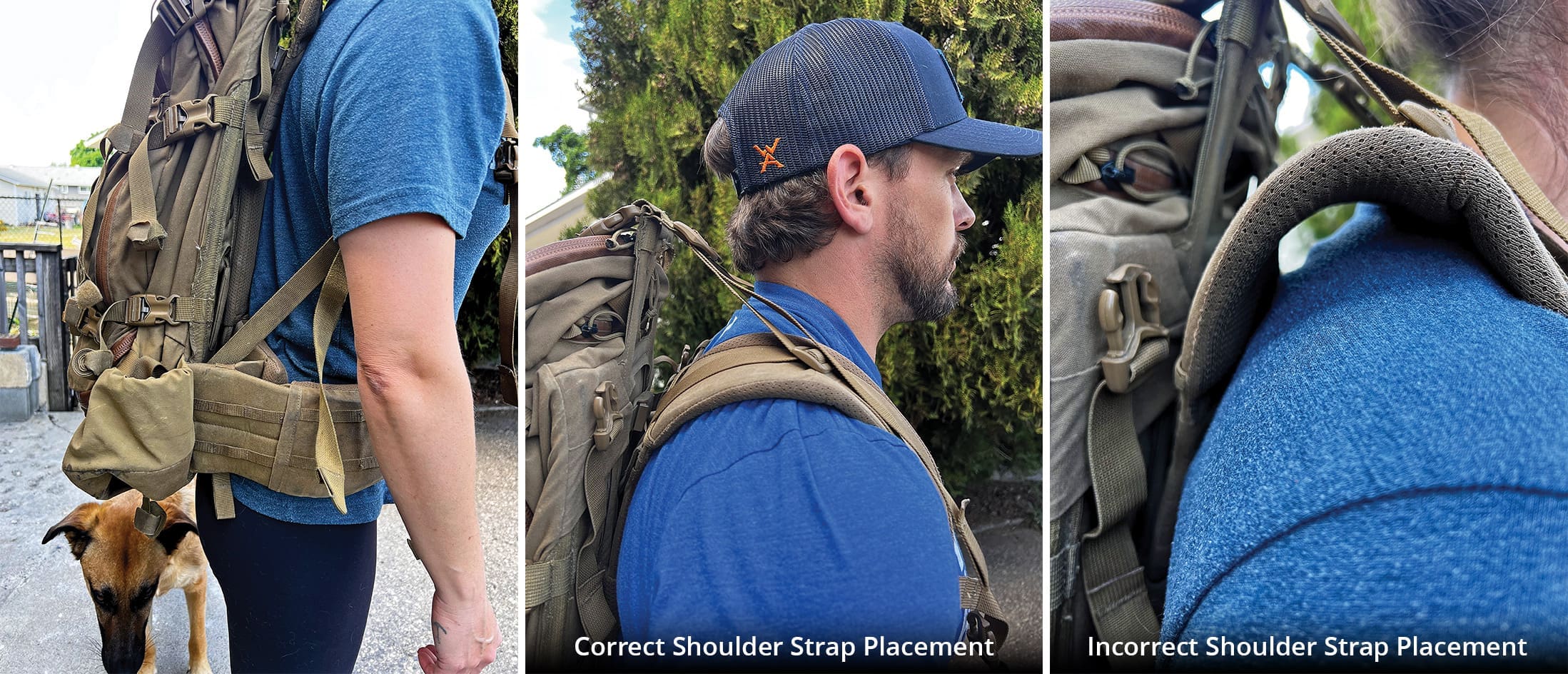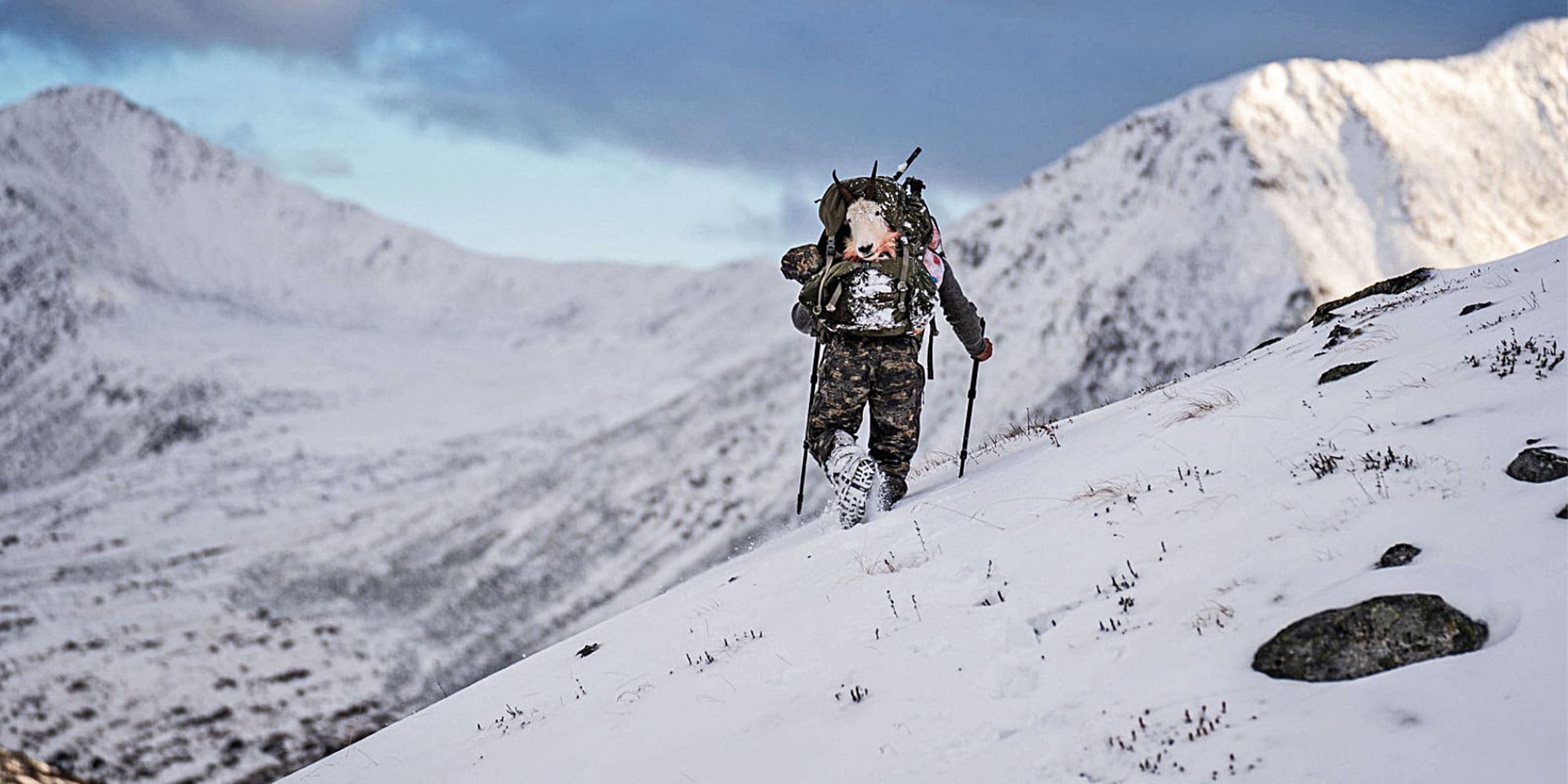
NOTICE: Certain links on this post may earn a commission for Western Hunter Magazine from Amazon or our other affiliate partners when you make a purchase. Thank you for your support.
Rucking: Why You Need It
Rucking has surged in popularity in recent years, with brands like Goruck and Outdoorsmans gaining mainstream recognition. Yet the concept of rucking–carrying weight while moving–has been ingrained in human history for millennia. Whether it was carrying water to a village, transporting a kill home to feed the family, hauling climbing gear to a wall, or even lugging golf clubs for 18 holes, the act of rucking has been a part of human existence.
But do we need to ruck incessantly? While spending extensive time in the field with a pack may necessitate focused training, it’s not essential to maintain a year-round regimen. In fact, providing your body with a diverse training routine offers numerous benefits, from maintaining joint health to bolstering overall strength and longevity. By prioritizing a well-rounded fitness regime, you’ll ensure the resilience needed to continue exploring the backcountry alongside friends and family well into your golden years.
However, let’s return to the focus of this article–rucking. As I write, excitement courses through me as I prepare to transition from the gym to the field, embarking on endeavors such as checking cams, observing critters growing antlers, and hunting bears. It’s a time of year when the magic of hunting season begins to unfurl, and rucking plays a pivotal role in this seasonal transition.
When it comes to rucking, there are several key considerations to ponder. Firstly, it’s essential to understand how to properly fit your pack to your back, ensuring optimal comfort and functionality. Secondly, mastering efficient rucking techniques is paramount for maximizing performance and minimizing strain. Lastly, determining where to commence your rucking program is crucial for setting realistic goals and progressing effectively.

Fitment
Pack fit is crucial, yet often overlooked, particularly at the outset. Many folks find themselves constantly adjusting straps and belts, encountering discomfort and rubbing. But more often than not, it’s not the pack itself–it’s the fit. Your goal is to position the pack correctly before tightening it down. Can you comfortably hike with moderate weight using just the shoulder straps? You should be able to. Poor fit not only causes discomfort but can also disrupt your natural gait cycle. For instance, if the pack sits too low, it restricts hip movement, forcing you to shorten your stride, which feels as awkward as walking with your pants around your ankles. So, get your pack positioned correctly from the start.
The key is the lumbar support pad–it should align with your lumbar spine, just above your belt line. With the shoulder straps snug, the pad should nestle perfectly there. If it’s too low, it’ll press against your sacrum and SI joints, hindering movement. Additionally, a low-sitting hip belt leads to chafing during extended hikes.
Once the lumbar pad is in place and the hip belt secured, tighten the shoulder straps until there’s no space between them and your back. Any gap indicates the pack is too long, necessitating adjustment. If the lumbar pad rides up, the pack is too short. However, this is rarely the case.
A word from experience: packs tend to stretch with use and weather conditions, so anticipate mid-trip adjustments. After all, schlepping a 120-lb load with an ill-fitting pack is no joke.
And that’s it for pack setup–simple yet crucial. It’s like wearing boots that don’t fit and hoping for the best. Take the time to find the right fit–your back will thank you.
Rucking Efficiently
While it may seem like just walking, mastering efficient rucking involves much more. We’ve all encountered someone who glides effortlessly through mountain terrain, barely making a sound and seemingly impervious to fatigue during long climbs. Sure, fitness plays a part, but a significant factor is what’s known as the “economy of effort.” This concept boils down to refining the art of walking on uneven surfaces while carrying weight.
If you are someone who has to look down and concentrate on the ground a lot because you are notorious for tripping a lot or falling, then you need to work on some balance exercises. Here are a few I recommend.
Dowel Walking
Equipment Needed: Dowel
Instructions: Place a dowel on your living room floor and walk back and forth across it barefoot for 2-5 minutes. Repeat this exercise 2-5 times a week.
Benefits: Improves foot grip and stability on uneven terrain, strengthens foot muscles.
Agility Exercises
Equipment Needed: Cones or markers
Instructions: Set up cones and perform agility drills by running around them forward, backward, and sideways. Start slowly to prevent injury and gradually increase intensity over a few weeks.
Benefits: Enhances lower leg and foot muscle strength, improves agility and coordination.
Balance Board Work
Equipment Needed: Balance board
Instructions: Stand on a balance board for 1-2 minutes at a time, gradually progressing to squats, lunges, and single-leg squats on the board.
Benefits: Develops stability and balance on unstable surfaces, strengthens core and leg muscles.
If you struggle with the added weight on your back, incorporating core work into your routine is essential for backcountry endurance. But forget about traditional sit-ups and leg raises–odd object lifting is your ticket to success. Here are a couple of options.
Variations in Pack Carrying
Instructions: During your training sessions, experiment with different ways of carrying your pack to engage your core muscles. For example, carry your pack on one shoulder for 60 seconds, then switch to the other side. Alternatively, sling your pack over one shoulder and maintain an upright position for 60 seconds before switching sides. Lastly, try carrying your pack on the front of your body for around 60 seconds. These unconventional pack-carrying techniques will enhance your body’s ability to resist rotational forces when carrying weighted objects.
Sandbag Training
Instructions: Incorporate sandbag training into your regimen using sandbags as a versatile tool. For instance, you can use sandbags in your pack to simulate varied weights. Additionally, utilize a range of sandbag sizes, such as 60, 40, and 20-lb sandbags for your pack, along with a 100-lb sandbag for lifting. While I won’t delve into a specific training program here, a quick online search for “sandbag training” will yield numerous effective workouts to incorporate into your routine.
Breathing
Finally, optimizing your breathing is paramount for efficient rucking. Allow me to share an anecdote from my recent experience. I conducted a VO2max assessment for an underwater welder employed on offshore oil rigs. Despite being middle-aged, not particularly active, and weighing over 220 lb, I expected his score to fall within the 45-50 range. To my surprise, he achieved a remarkable score of 62. Scores exceeding 62 are considered elite. I’ve even tested accomplished athletes whose scores didn’t surpass 60.
What set this welder apart? His job demands impeccable breathing technique for safety and efficacy. This underscores the importance for all of us: by honing our breathing and maximizing oxygen intake, we enhance our endurance for backcountry endeavors. Here are some methods to improve your breathing.
1. Nasal breathing is a fundamental practice. During walks, hikes, or rides, challenge yourself to breathe solely through your nose. If you find it difficult, it indicates a need to reduce your respiratory rate. Slow down or pause until nasal breathing feels comfortable.
2. Swimming offers invaluable lessons in breath control during aerobic activity. Head to the pool or lake and focus on breathing every 3, 5, 7, 9, or 11 strokes while swimming. Avoid panicking and resorting to rapid, gulping breaths.
3. Engage in breath-hold exercises by simply holding your breath and pinching your nose shut. Gradually extend your breath-hold duration through consistent practice.
4. Breathing is a vast topic deserving thorough exploration. Stay tuned for a comprehensive dive into breathing techniques later this year or early next year as part of our training regimen.
Where to Start Your Rucking Program?
Approach rucking as both a running race and a lifting goal simultaneously. The ultimate aim is to ruck efficiently for 5-6 hours daily with a 70-lb pack by the time your goal hunt begins. However, it’s crucial not to begin at that intensity, as it could lead to overexertion. Instead, use it as motivation throughout your training journey. Here’s a suggested program to work towards this goal.
Week 1: 2x a week ruck 30-35 lb for a total of 2-3 hours combined in the sessions.
Week 2: 2x a week ruck 35-40 lb for a total of 2-3 hours combined in the sessions.
Week 3: 2x a week ruck 40-45 lb for a total of 2-3 hours combined in the sessions.
Week 4: 2x a week ruck 50-55 lb for a total of 2-3 hours combined in the sessions.
Week 5: 2x a week ruck 55-60 lb for a total of 2-3 hours combined in the sessions.
Week 6: 2x a week ruck 60-65 lb brick-style workout:
- Ruck 1 – Afternoon 80 minutes with 60-65 lb.
- Ruck 2 – The following morning 60 minutes with 60-65 lb.
Week 7: 2x week ruck 65-70 lb brick-style workout:
- Ruck 1 – Afternoon 80 minutes with 65-70 lb.
- Ruck 2 – The following morning 60 minutes with 65-70 lb.
Week 8: 2x week ruck 70-75 lb brick-style workout:
- Ruck 1 – Afternoon 80 minutes with 70-75 lb.
- Ruck 2 – The following morning 60 minutes with 70-75 lb.
That’s about as straightforward as you need for an eight-week rucking program to get into mountain shape. In addition to this structured program, I also recommend incorporating heavy pack work into your daily routines. For instance, try wearing a 100-lb pack while watching a 20-30-minute show, mowing the lawn, or washing the car. Getting comfortable with discomfort, especially with heavy packs, is crucial for mountain preparedness, and these simple yet effective activities can help achieve that.
Conclusion
The resurgence of rucking, exemplified by brands like Goruck and Outdoorsmans, reflects a timeless human practice with diverse historical roots. While rucking offers benefits for physical conditioning, maintaining a year-round regimen may not be necessary. A holistic fitness approach is recommended for long-term health and resilience.
Nevertheless, focusing on rucking demands attention to pack fit, efficient techniques, and program initiation. From proper lumbar support alignment to balance exercises and breathing techniques, preparation is key. Embracing discomfort through structured training or daily heavy pack activities is essential for mountain readiness.
In essence, rucking represents more than just a fitness trend–it embodies human adaptability and connection to nature. As enthusiasts embark on their rucking journeys, they are encouraged to explore, discover, and steward the landscapes they traverse, enriching both their physical abilities and their connection to the outdoors.













